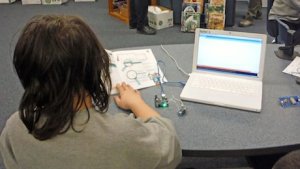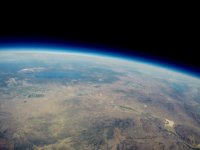The High Hopes Project: A Model For Global STEM Learning
Your content has been saved!
Go to My Saved Content.In my job as STEM (Science, Technology, Engineering, and Math) learning facilitator, I find too often that what passes for quality STEM learning leaves me wanting. I've had educators explain that, because their students experience science class twice a week for 30 minutes, visit the computer lab 30-45 minutes per week, attend math class every day, and occasionally experience an engineering activity, they are a STEM class or school.
Partly to counter those misconceptions, but mostly to model the powerful learning possibilities inherent in an integrated inquiry and problem-based global STEM project, we decided to facilitate the latest iteration of the High Hopes Project. This spring, the project will launch into the stratosphere several high-altitude balloons that include student-designed and -built payloads.
The students involved in the project attend two Title 1 schools from Sparks, Nevada -- Sparks Middle School and Sparks High School, both with high percentages of students on free and reduced-priced lunch -- and Cottonwood Elementary School, a K-4 school in Fernley, Nevada. While these students are taking lead roles in the High Hopes Project, there's space for all comers.
Challenges For All Students
Everyone is invited to explore and help answer the following challenges:
- What are the characteristics of Earth's atmosphere as you ascend up to near space? That's 30,500 meters or 100,000 feet! At that altitude, you are above 95 percent of the Earth's atmosphere.
- How will those characteristics affect the efficiency of a solar panel?
- What will happen to party balloons inflated to different sizes?
- How fast does a weather balloon travel as it rises through the atmosphere?
Follow the links provided above for more information on each challenge, and revisit the project wiki often to find new challenges posted.
After the flights, we will post the photos, video, and data we've gathered so that everyone can learn what happened to the various experiments we send aloft, along with the air temperature, water and air pressure, and other readings as well.
A Model of Collaboration
Project participants are utilizing a blog, Twitter, a web page, YouTube, Google Docs, a Flickr photo site, and a wiki page to solicit and archive the High Hopes of the world. Anyone can submit their High Hopes, and students from around the globe are requested to share High Hopes for their education, community, and the world. We have already received High Hopes from the U.S., but also from places as far away as Norway and Turkey!
Once submitted through the web page or Twitter, the Hopes are automatically archived in a Google Spreadsheet. Before launch, they will be printed on small strips of paper and loaded in two specialized payloads designed by Sparks High School students. Next, Sparks Middle School students will design latches to open the payloads at two different altitudes. One, containing most of the Hopes, will open in near space, while the other will be designed to open much earlier to release the Hopes that Cottonwood Elementary students are engineering to glide, flutter, or helicopter slowly to the ground. In addition, the Cottonwood students are performing bioengineering experiments designed to identify a substance for pre-treating the paper to speed decomposition once the Hopes reach Earth.
An additional mode for collaboration is being modeled as well. Graduate and undergraduate engineering students from the mechanical engineering and materials sciences departments at the University of Nevada, Reno, are mentoring the K-12 students along the way. They've already met with the high school students designing the water pressure gauge that will be hung from the balloon and lowered 45 meters (150 feet) deep in the crystal clear waters of Lake Tahoe. The gauge, along with the GoPro cameras used to record its readings and archive the journey, will be hauled up through the water by the ascending balloon when launched from just above the water's surface.
The middle school students are designing a latch release that will utilize an Arduino, an open-source electronics platform programmed by writing code in the Arduino programming language. The device will most likely be programmed as an altimeter that will trigger the release mechanism when the predetermined altitude is reached. To learn the programming language, the engineering students are teaching their middle school partners about rocketry. The rockets will contain a mini-Arduino that the seventh and eighth grade students will learn to program for recording the rockets' maximum altitude. Based on their findings, they will then program the Arduinos triggering the High Hopes payloads to open.

During flight, payloads containing communications equipment are included. This enables students to track the balloon in real time, and also to locate and retrieve it upon landing.
Global Participation Encouraged
The project websites will also feature science, engineering, math, and language arts learning challenges that students worldwide are invited to solve or participate in.
Several launch dates are scheduled in April, May, and June 2015. You and the world are requested to participate! Follow the High Hopes Blog to note updates about launch times, to watch the progress in preparation, and for other challenges that you can join. We have high hopes that your students will be participants in this model global STEM project!
